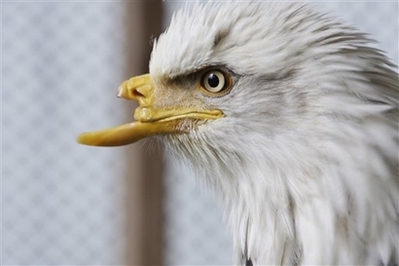Artificial beak ready for wounded bald eagle
(Agencies)
Updated: 2008-05-06 13:26
Updated: 2008-05-06 13:26
ST. MARIES, Idaho - She has been named Beauty, though this eagle is anything but.
Part of Beauty's beak was shot off several years ago, leaving her with a stump that is useless for hunting food. A team of volunteers is working to attach an artificial beak to the disfigured bird, in an effort to keep her alive.
|
|
"For Beauty it's like using only one chopstick to eat. It can't be done" said biologist Jane Fink Cantwell, who operates a raptor recovery center in this Idaho Panhandle town. "She has trouble drinking. She can't preen her feathers. That's all about to change."
Cantwell has spent the past two years assembling a team to design and build an artificial beak. They plan to attach it to Beauty next month. With the beak, the 7-year-old bald eagle could live to the age of 50, although not in the wild.
"She could not survive in the wild without human intervention," Cantwell said.
The 15-pound eagle was found in 2005 scrounging for food and slowly starving to death at a landfill in Alaska. Most of her curved upper beak had been shot away, leaving her tongue and sinuses exposed. She could not clutch or tear at food.
Beauty was taken to a bird recovery center in Anchorage, where she was hand-fed for two years while her caretakers waited in vain for a new beak to grow.
"They had exhausted their resources and she would likely be euthanized," Cantwell said.
Beauty was taken in 2007 to Cantwell's Birds of Prey Northwest ranch in Idaho after permits were obtained from the federal government.
Soon after, Cantwell met Nate Calvin during a speaking engagement in Boise. Calvin, a mechanical engineer, offered to design an artificial beak. A dentist, veterinarian and other experts eventually volunteered to help.
Molds were made of the existing beak parts and scanned into a computer, so the bionic beak could be created as accurately as possible.
"One side has much greater damage than the other," Cantwell said. "It's not as simple as a quick, snapped-off beak, 90 degrees and flush."
The nylon-composite beak is light and durable, and will be glued onto the eagle.
The team decided against fastening the new beak with screws because the stump is so close to the brain and eye, Cantwell said. But if the glue fails, screws will be tried, she said.
|
||
|
||
|
|
|
|


